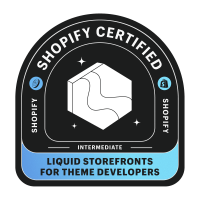
Ecommerce site migration – project execution strategy
Ecommerce site migration doesn’t have to give a headache! With a solid strategy in place, it doesn’t have to be an energy-eater. The ecommerce site migration process should be smooth and successful and bring only good changes for your business.
Table of Contents
How to plan ecommerce site migration?
The first step in any successful ecommerce site migration is thorough planning. I know, I know. It’s a nerdy thing. But trust me, it’s worth the work.
This phase involves setting clear objectives, getting into your current site’s limitations, and mapping out the new site’s desired features and capabilities. The best way to plan and perform ecommerce site migration is to hire an agency specialized for this kind of work.
What means ‘clear objectives’
Before going deeper into the technical aspects, define what you hope to achieve with your ecommerce site migration.
Are you looking to improve site performance, improve user experience, or add new functionalities? Clear goals will guide your decision-making process and keep the team that does the switch focused.
Current site assessment
Next, you’ll need a full audit of the current site and identify what’s working well and what isn’t. Metrics like site speed, user engagement, and conversion rates should catch the most attention. Gather feedback from customers to understand pain points and areas for improvement. This assessment will serve as a baseline to measure the success of your migration.
Mapping out the new site
With your objectives and current site assessment in hand, the team will start mapping out the structure and features of your new site. A sitemap will help to visualize the layout and navigation, functionalities you need, such as payment gateways, search capabilities, and third-party integrations. This blueprint will be a roadmap during the ecommerce site migration.
The migration day
If you do the planning well, this day will be for cheers and champagne! Jokes aside, preparation is key to minimizing downtime and ensuring a smooth transition.
Downtime should be as short as possible, so the ecommerce site migration should be done at a time when there are fewer sales. This phase involves setting up a new environment, backing up data, and testing everything thoroughly.
That’s why a team is important for this process. They will handle all the steps and take care of technicalities you don’t have to know about that deeply. But for those who want to know more about what happens, here’s more about ecommerce site migration tasks.

Backing up your data
Data loss is one of the biggest risks during an ecommerce site migration. To prevent this, create a strong backup of your current site. This includes all databases, product information, customer data, and media files. Store the backup in a secure location and verify its integrity before proceeding.
Testing everything
Before the actual migration, do thorough testing in a staging environment—that is, on another version that is not live. This includes checking site functionality, compatibility with different browsers and devices, and load testing to ensure the site can handle peak traffic (you can do it with tools like Google PageSpeed Insights). Testing helps identify potential issues and allows you to fix them before going live.
Executing the migration
With thorough planning and preparation, the actual migration should be straightforward and simple. This phase involves transferring your data, redirecting URLs, and doing a final round of testing.
Transferring data
The migration starts by transferring all data from the old site to the new one. This includes all product information, customer data, and order history, with special attention to data integrity and consistency.
Redirecting URLs
One critical aspect of ecommerce site migration is maintaining your SEO rankings. It’s best that the whole migration process is done by experts to make sure that search engines and users can still find your pages.
Final testing and launch
After transferring data, do a final round of testing – just to make sure everything works perfectly. Check for broken links, missing images, and any functionality issues. Once the team is confident everything is working correctly, it’s time to go live. Announce the launch to your customers and stakeholders, and be prepared to monitor the site closely for any issues.
Post-migration tasks
Do you think that’s all? Oh, no! The work doesn’t stop once your new site is live.
Post-migration tasks are also important, and this phase involves monitoring performance, gathering feedback, and making necessary adjustments. The team you choose to work with will handle this, so choose wisely.
The site’s performance will be closely monitored in the initial days after migration. Analytics tools will help you track key metrics like site speed, user engagement, and conversion rates. Look for any unexpected drops or spikes that could indicate issues. Regular monitoring will help to catch and resolve problems quickly.
On top of that, feedback from users is invaluable after an ecommerce site migration. Encourage customers to share their experiences and report any issues they encounter. This feedback will help identify improvement areas and ensure the site meets user expectations.
- Best ecommerce agency in US – Top 10
- Ecommerce automation – work smarter
- The % split – paid ads vs SEO vs organic social in ecommerce
- How to reduce Customer Acquisition Cost (CAC)
- Ecommerce automation and Shopify Flows
Key takeaways
Ecommerce site migration may seem overwhelming, and don’t go into it without a good plan. Because with a good strategy, it can be a smooth and rewarding process. And not make you wish to go back in time.
Remember, thorough planning, careful execution, and ongoing optimization are the keys to a successful ecommerce site migration. Choose a team that will do all the work, and you can monitor the process from a distance.
P.S. We’re experienced ecommerce nerds, check our services, maybe we’re a good fit for your needs.

